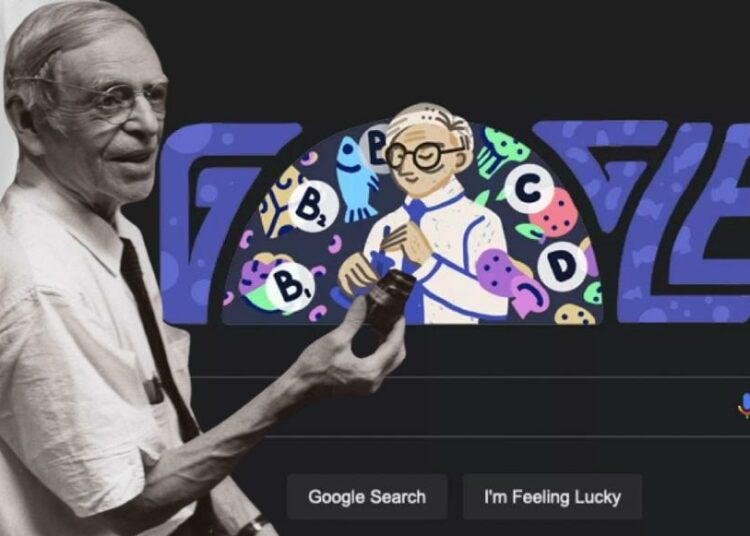Casimir Funk is referred as ‘father of vitamins’. He was a Polish-American biochemist and first to formulate the concept of “vital amines.” This groundbreaking scientific and nutritional discovery helped cure several life-threatening diseases.
He may not have gotten a Nobel Prize for his work, but the man is being honoured on his 140th birthday this February 24, 2024 with a Google Doodle.
Born 140 years ago on Friday and “among the first to discover and introduce the concept of vitamins,” has been honoured by Google’s homepage doodle.
Funk earned a PhD in organic chemistry from the University of Bern in Switzerland aged just 20, after growing up in Warsaw, Poland.
The biochemist was studying the effects of food ingredients on illnesses like scurvy, a condition caused by severe vitamin C deficiency, when he developed the idea for vitamins in 1911.
Where did vitamins come from?
The connection between food and health was already established by the 18th century. Scottish naval surgeon James Lind demonstrated in 1747 that citrus fruits could prevent scurvy, but the specific nutrient wasn’t identified at the time.
In the late 1890s, Dutch physician Christiaan Eijkman connected a poor diet with Thiamine deficiency, a disease which affects the nervous system and is called beriberi in its severe form.
Between 1928 and 1967, six Nobel Prizes in Chemistry and five Nobel Prizes in physiology were awarded to scientists for their research on vitamins – including to Eijkman in 1929.
Funk never received a Nobel Prize, but his work, which built on the Dutch physician’s discoveries, brought vitamins to the masses when in 1911 he transformed the B1 vitamin – the first supplement to be discovered in 1910 – into a small crystal.
What’s more, Funk is credited as the origin of the word vitamin, which he coined in 1912 from the terms “vital” and “amine” – versatile molecules that have a range of roles, like keeping us healthy.
While some vitamins later discovered were found not to be amines, the name stuck and lost its -e to become vitamin over time.
These lab-grown hearts made from human stem cells are used to train AI to detect heart diseases.
“When I chose the name ‘vitamine,’ I was well aware that these substances might later prove not to be of an amine nature. However, it was necessary for me to choose a name that would sound well and serve as a catchword since I had already at that time no doubt about the importance and the future popularity of the new field,” Funk wrote in his 1922 book ‘Die Vitamine’.
In the years following the publication of his book, scientists around the world discovered 13 different vitamins by 1948, with commercial tablets becoming available in 1935.
From life-saving molecules to supplements:
While they were first identified to treat diseases which were rampant due to bad nutrition, today vitamins are used to maintain healthy skin, hair and eyes, support metabolism and assist in blood clotting among others.
Funk passed away in 1967 in the US, where he had moved to in 1915 and became a naturalised citizen in 1920.
Since 1998, Google has used temporary logos called Doodles on its homepage to celebrate achievements and people. Hundreds of Doodles are displayed each year.
The Google Doodle honouring Funk features the biochemist with an Erlenmeyer flask, and nutritious foods such as fish, oranges, mushrooms and broccoli floating around him with the letters B1, B2, C and D.
This is the first time a Casimir Funk Doodle was published, with Google users in Western Europe and North America catching a glimpse of the temporary homepage honouring the biochemist.
We’ve got the edge. Get real-time reports, breaking scoops, and exclusive angles delivered straight to your phone. Don’t settle for stale news. Join LEADERSHIP NEWS on WhatsApp for 24/7 updates →
Join Our WhatsApp Channel










